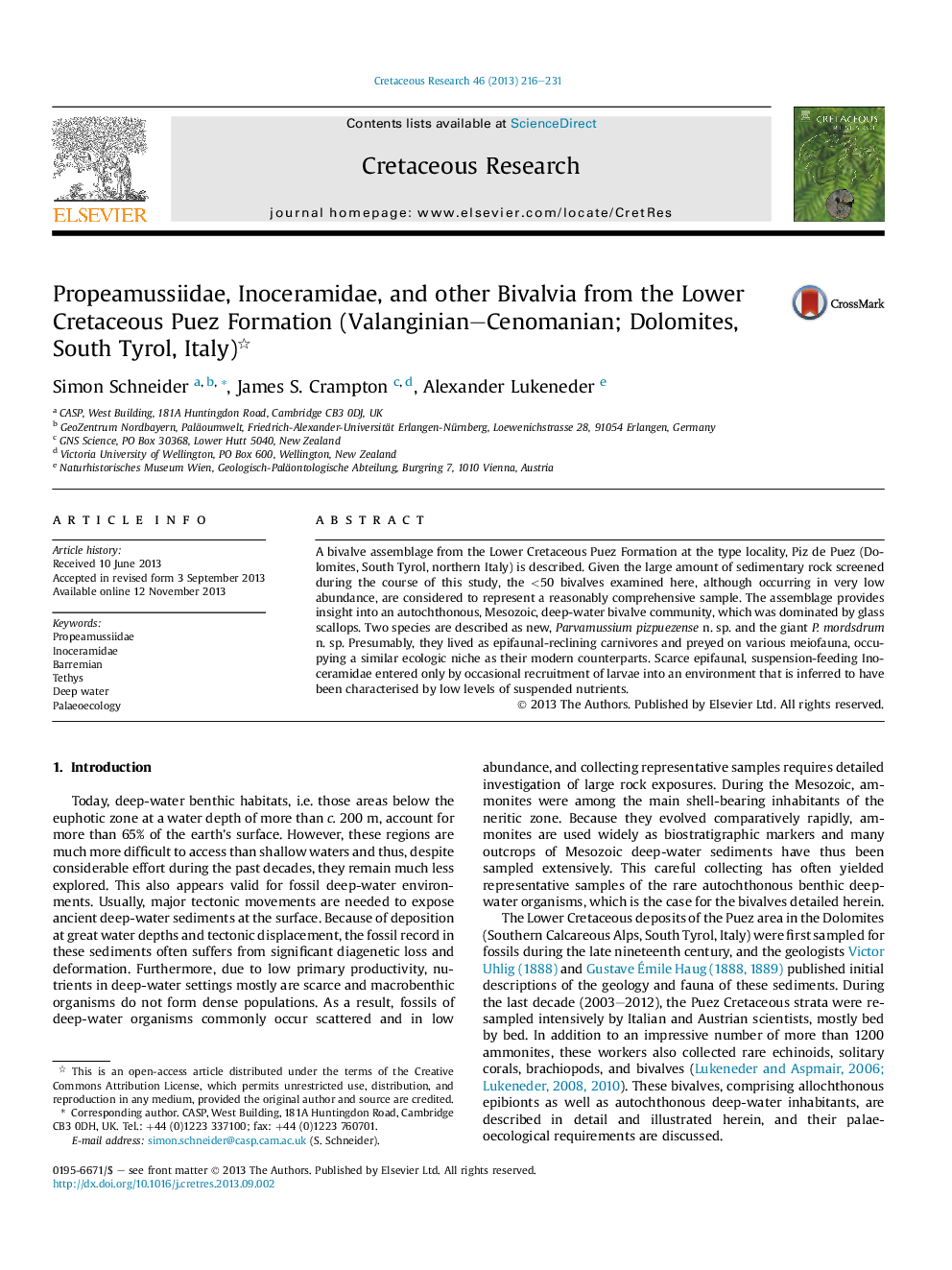| Article ID | Journal | Published Year | Pages | File Type |
|---|---|---|---|---|
| 6448324 | Cretaceous Research | 2013 | 16 Pages |
Abstract
A bivalve assemblage from the Lower Cretaceous Puez Formation at the type locality, Piz de Puez (Dolomites, South Tyrol, northern Italy) is described. Given the large amount of sedimentary rock screened during the course of this study, the <50 bivalves examined here, although occurring in very low abundance, are considered to represent a reasonably comprehensive sample. The assemblage provides insight into an autochthonous, Mesozoic, deep-water bivalve community, which was dominated by glass scallops. Two species are described as new, Parvamussium pizpuezense n. sp. and the giant P. mordsdrum n. sp. Presumably, they lived as epifaunal-reclining carnivores and preyed on various meiofauna, occupying a similar ecologic niche as their modern counterparts. Scarce epifaunal, suspension-feeding Inoceramidae entered only by occasional recruitment of larvae into an environment that is inferred to have been characterised by low levels of suspended nutrients.
Related Topics
Physical Sciences and Engineering
Earth and Planetary Sciences
Palaeontology
Authors
Simon Schneider, James S. Crampton, Alexander Lukeneder,
